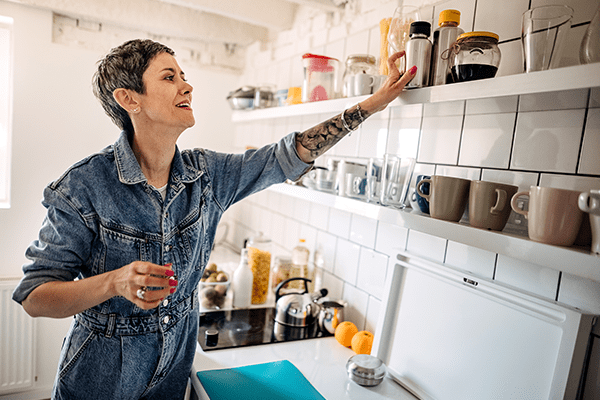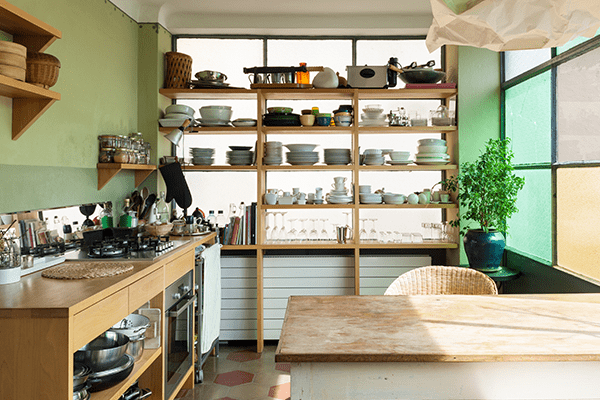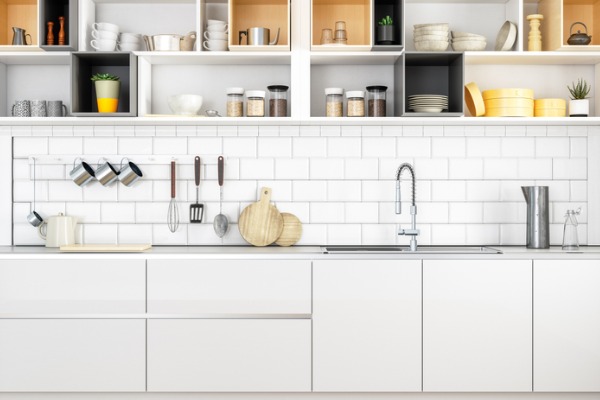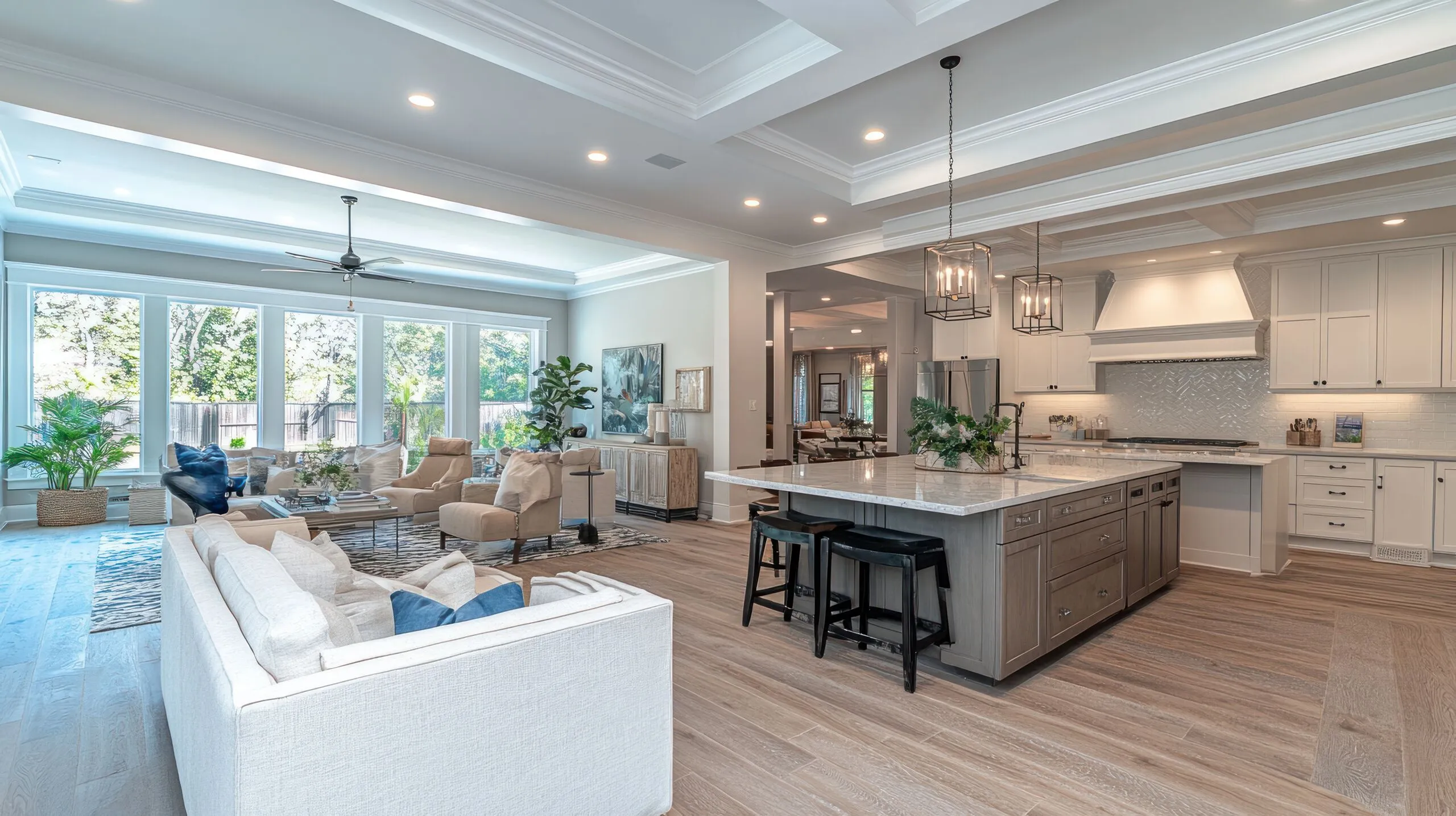Open shelving has been making a major comeback in kitchen remodeling over the last several years. Adding open shelving to your kitchen has many benefits, both for design and functionality. It can make the kitchen feel more welcoming to guests, add a more open feel to the space, and give you the opportunity to show off stylish dishware or appliances. Open shelving also increases your storage space, makes items more accessible/easier to find, and it’s inexpensive. For those remodeling their kitchen with open shelving this year, here are three styling tips:

1. Easy-access storage
As the kitchen is the center of most homes, form must follow function and efficiency. When planning how to implement open shelving into a kitchen remodel, first consider these practical tips:
- Lower shelf: Keep everyday items on lower shelves or cabinets. Plates, bowls and drinking glasses that are in constant rotation should be within arm's reach and close to the dishwasher if possible.
- Middle shelf: Mixing bowls, cookbooks, and cutting boards that you may use less frequently are best located on middle shelves.
- Top shelf: Save the top shelf for storing more decorative or rarely used items like serving trays, barware, and baskets.

2. Design choices
No matter what room you are decorating in the house, arranging items on shelves is an exercise in design. You have to use colors, shapes, collections, patterns, and repetition to create visual interest. The following tips are some basic design ideas to help create balance and beauty in the open shelving of your kitchen:
- Choose uniformity over variety: If you're going for a clean and simple look in your kitchen, choose uniformed plates, glasses, bowls, etc. Use all one color or a limited color palette. Sticking with all white or glass are popular options for items being displayed on open shelving as well.
- Be clear, not cluttered: We're all accustomed to hiding away our chaos and clutter behind cabinet doors. You can hang on to your recycled jelly jars and mismatched keepsake mugs, but it's not necessary to display them. Keeping the number of items to a minimum, particularly on lower shelves with everyday essentials, can also add to a clutter-free look. If minimizing is hard for you, monitor what's left on the shelf when you start your dishwasher for a week or so. Chances are you won't miss those things if they're stashed away in a pantry or behind a lower cabinet door, rather than displayed on your open shelving.
- Create visual interest with multiple items and repetition: Keep like items together and stack them in varying or interesting heights. Line up teacups and saucers evenly and with all the handles facing the same direction. Layer items, such as a cutting board leaning against the back wall with a candle or salt and pepper shakers in front of it to add depth.
- Position small, low-intensity lights under each shelf: Different lighting options include LED tape, puck lights, or light bars. Lighting can create a cozy ambiance in the kitchen when it’s not in use.

3. Style it your way
If there's room on your open shelving, incorporate non-kitchen related decorations that add variety and reflect your personal style. These things can also serve to break up the monotony or add spice in kitchens with neutral color palettes. Here are some ideas:
- Use artwork or photographs that are special to you and your family to make the kitchen a warm and inviting place.
- Display collectibles or souvenirs from recent travels or family vacations.
- Showcase cookbooks.
- Refresh personal items periodically based on special events, holidays, and celebrations throughout the year.


